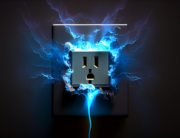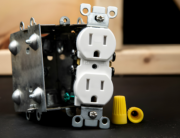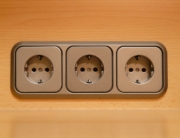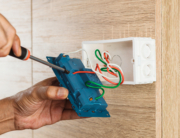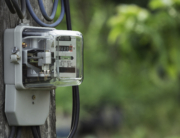Every construction site is covered with electrical hazards, regardless of whether you are tearing down a structure or building something from the ground up. In order to keep your workers and workplace safe, you must follow safety precautions across the site.
Here are 8 safety tips that you must follow in the construction site.
-
Personal Protection
Personal protection should come first as compared to any other piece of safety equipment as it directly protects you against electrical mishaps. The amount of personal protection required is based on your potential exposure to electricity. Use electrical gloves and footwear while handling electrical materials as they provide basic safety. Take extra precautions like using a face shield, fire-resistant helmet and protective eyewear and earmuffs while working with wiring or if you are in close contact with electrical equipment.
-
Testing equipment
Never handle any electrical wiring or equipment if you don’t know how to operate it. The electrical power testing equipment provides the necessary protection from unwanted and potential deadly shocks. Ensure that the worksite is stocked with voltage detectors, clamp meters and receptacle testers.
-
Cord protectors
One good electric safety practice includes use of safe extension cords and outlet strips. As an extra measure, use cable covers and cord protectors. Use floor cable protectors for safety and ensure that they are highly visible to prevent tripping on the worksite.
-
Voltage regulators and circuit breakers
They are critical pieces of safety equipment that curb the problem before it gets worse. Always use a surge protector to shut off the worksite’s power supply during an emergency. A voltage regulator helps in preventing equipment damage over time or damage during a surge of electricity.
-
Precautions
Some electrical hazards will occur and they would be out of your control. However, you can control some and reduce the risk of electrocution by being cautious at the worksite. Some precautions include knowing where the electrical wiring will be an issue on a construction site and label it for safety measures and using ground fault circuit interrupters for all receptacle outlets to prevent electrical shock.
-
Equipment use
Using an electrical equipment at the workplace can end up becoming a very natural and comfortable thing for the workers. This may lead to improper use of tools or be practicing unknown hazards without realizing. Training the staff properly will help them identify the unknown improper shortcuts and thus reduce the risk of equipment-related electrocution. Apart from that, ensure that the coworkers know the proper way to use every tool, especially in direct electrical work.
-
Identifying problems
The dangers presented by the construction sites must never be overlooked. Encourage your workers to practice identifying any kind of abnormality or any kind of electrical hazard, such as identifying a distinct burning smell. Make a safety checklist and incorporate it into your daily routine. Create an environment where the workers feel comfortable to alert a supervisor in case there is any problem.
-
Risk assessments
Carry out an exhaustive and comprehensive risk assessment before any kind of work starts on the construction site. This helps in identifying the potential electrical hazards and ensuring that suitable control measures are in place to prevent them from causing harm to workers. It is important to familiarize yourself with the results of the risk assessment to understand which hazards you need to look out for.
We, at D&F Liquidators, have a long history of providing the best electrical services at a competitive price. We prioritize electrical safety and help every work place do the same with the range of electrical safety goods that we offer. Contact us for any queries before its too late.

D&F Liquidators has been serving the electrical construction materials needs for more than 30 years. It is an international clearinghouse, with 180,000 square facility located in Hayward, California. It keeps an extensive inventory of electrical connectors, conduit fitting, circuit breakers, junction boxes, wire cable, safety switches etc. It procures its electrical materials supplies from top-notch companies across the globe. The Company also keeps an extensive inventory of electrical explosion proof products and modern electrical lighting solutions. As it buys materials in bulk, D&F is in a unique position to offer a competitive pricing structure. Besides, it is able to meet the most discerning demands and ship material on the same day.

